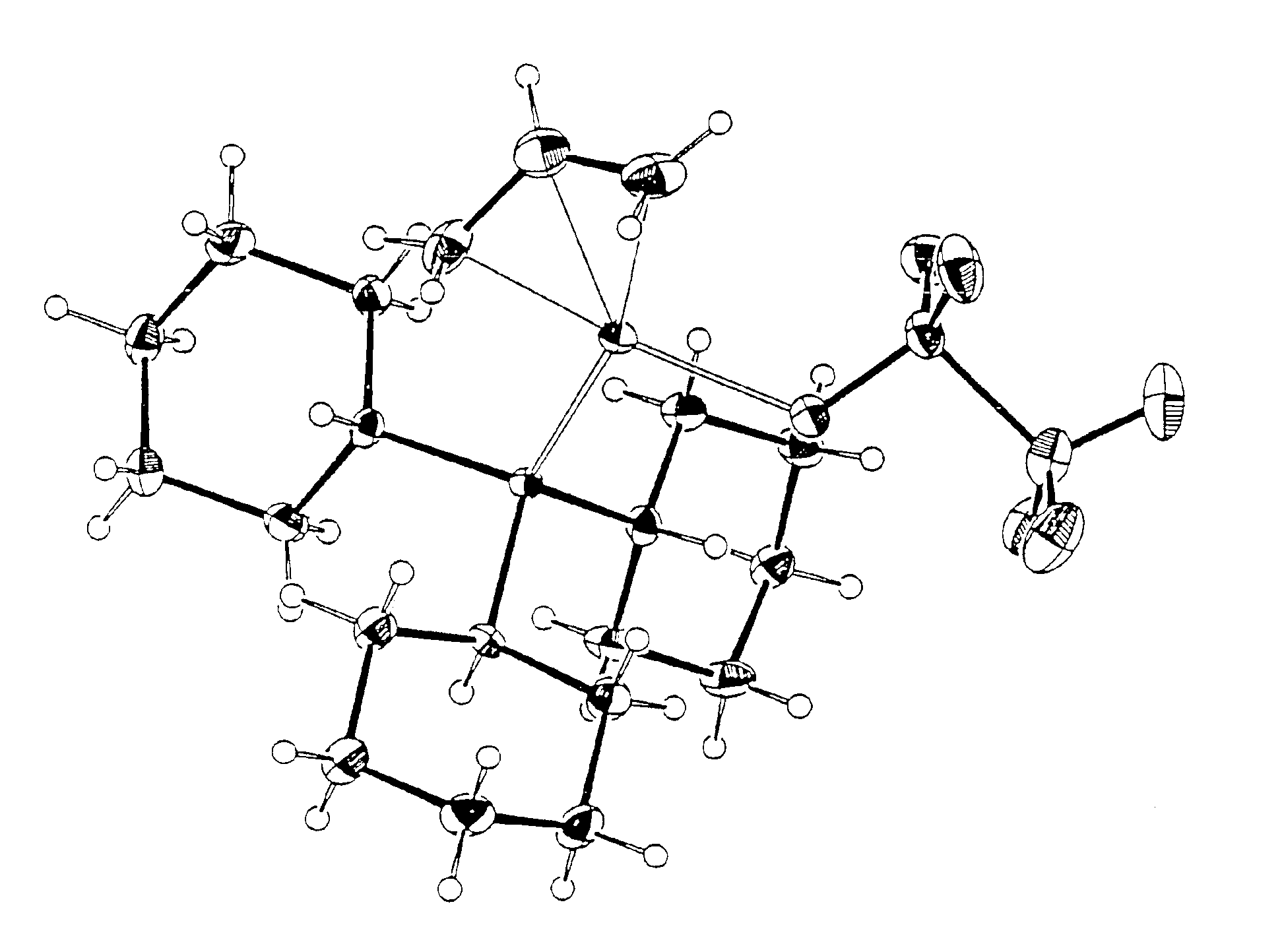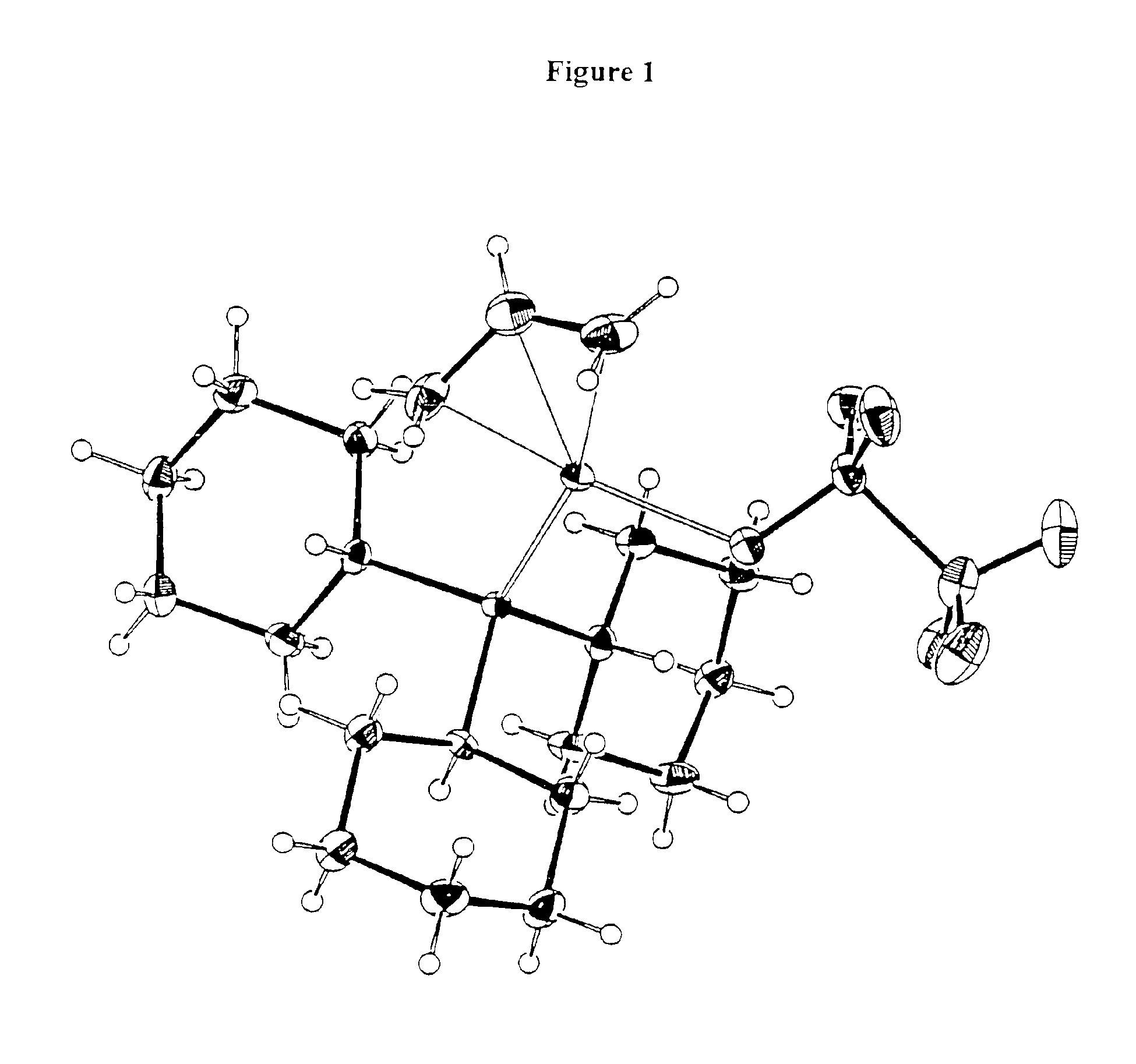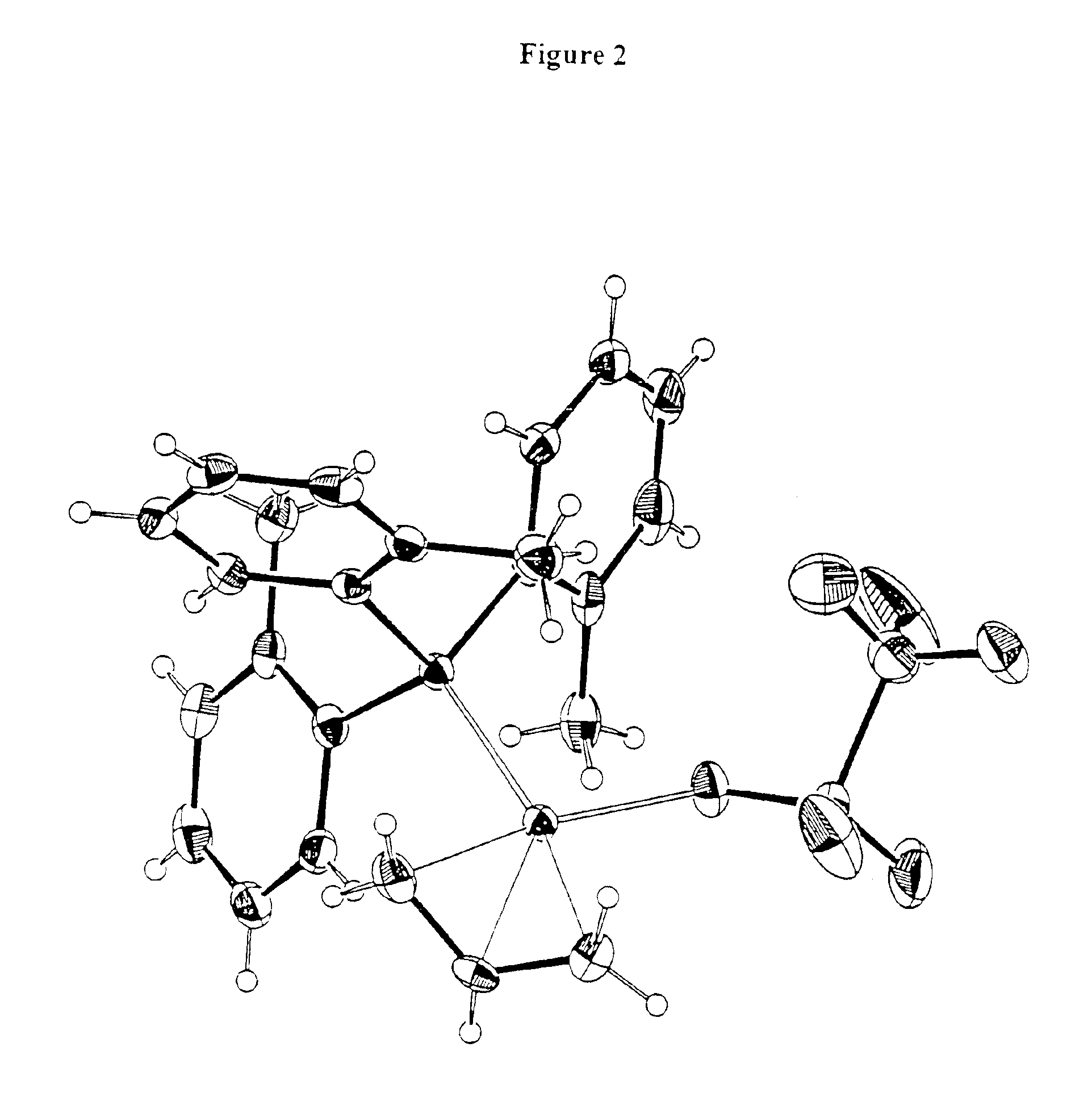Polymerized cycloolefins using transition metal catalyst and end products thereof
a technology of transition metal catalyst and cycloolefin, which is applied in the field of addition polymerization of cycloolefin, can solve the problems of difficult removal of residual metals, low residual group, and affecting the polymer properties of the solvent, and achieve the effect of low residual group level
- Summary
- Abstract
- Description
- Claims
- Application Information
AI Technical Summary
Benefits of technology
Problems solved by technology
Method used
Image
Examples
example 1
[0500]Procatalyst A. (Allyl)palladium(tricyclohexylphosphine)chloride. To (allyl)palladium chloride dimer (1.00 g, 2.73 mmol) was added about 75 ml of toluene to give a yellow solution with a small amount of insolubles. To this mixture was added tricyclohexylphosphine (1.55 g, 5.54 mmol) dissolved in about 20 ml of toluene. A clear yellow solution resulted which was allowed to stir at room temperature for 2 hours. The solvent was removed in vacuo to yield a pale yellow powder which was dissolved in THF and stirred overnight. The THF was then removed in vacuo to give an off-white powder which was washed with 50 ml of ether three times. The resulting free-flowing, off-white powder was dried in vacuo. Yield 1.6 g (63%). 31P NMR (CD2Cl2): * 41.1 (s). 1H NMR (CD2Cl2): * 5.40 (m, 1H), 4.49 (br t, 1H), 3.49 (d of d, 1H), 3.42 (s, 1H), 2.59 (d, 1H), 2.14 (m, 3H), 1.90 (br s, 6H), 1.80 (s, 6H), 1.72 (s, 3H), 1.47 (br s, 6H), 1.27 (s, 9H).
example 2
[0501]Procatalyst B. (Allyl)palladium(tricyclohexylphosphine) triflate. A methylene chloride solution of (allyl)palladium(tricyclohexylphosphine)chloride (1.00 g, 2.16 mmol) was added to a methylene chloride solution of silver triflate (0.565 g, 2.20 mmol). The reaction mixture was shielded from room light and allowed to stir for 18 hours. The resulting slurry was filtered to yield a light yellow filtrate. The methylene chloride was removed in vacuo to give a free-flowing white powder. Yield 1.05 g (84%). 31P NMR (C6D6): 42.2 (s). 1H NMR (C6D6): * 5.10 (t, 1H), 4.66 (m, 1H), 3.64 (d of d, 1H), 2.62 (s, 1H), 1.95 (d, 1H), and peaks from 1.9 to 1.0 due to tricyclohexylphosphine. Crystals of this material were grown from methylene chloride / pentane solution. The results of a x-ray crystal structure determination are presented in FIG. 1.
example 3
[0502](Allyl)palladium trifluoroacetate dimer. Approximately 1.60 g (4.34 mmol) of (allyl)palladium chloride dimer was dissolved in methylene chloride. This solution was added to a methylene chloride solution of silver trifluoroacetate 2.02 g (9.14 mmol) which was cooled to −10° C. The mixture was allowed to stir for 3 hours. The resulting cloudy solution was filtered to yield a bright, yellow filtrate. Removal of solvent in vacuo gave a yellow powder. 1H NMR (CD2Cl2): * 5.63 (br s, 1H), 4.13 (d, 2H), 3.08 (d, 2H).
PUM
| Property | Measurement | Unit |
|---|---|---|
| Length | aaaaa | aaaaa |
| Fraction | aaaaa | aaaaa |
| Nanoscale particle size | aaaaa | aaaaa |
Abstract
Description
Claims
Application Information
 Login to View More
Login to View More - R&D
- Intellectual Property
- Life Sciences
- Materials
- Tech Scout
- Unparalleled Data Quality
- Higher Quality Content
- 60% Fewer Hallucinations
Browse by: Latest US Patents, China's latest patents, Technical Efficacy Thesaurus, Application Domain, Technology Topic, Popular Technical Reports.
© 2025 PatSnap. All rights reserved.Legal|Privacy policy|Modern Slavery Act Transparency Statement|Sitemap|About US| Contact US: help@patsnap.com



